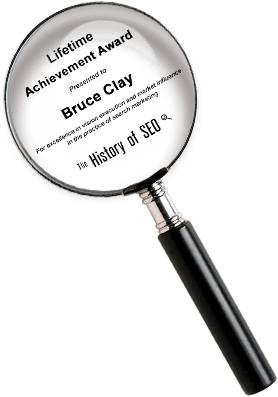How do I build content for voice, video and text AI surfaces at once?

- Overview
- What I Think
- Deep Dive: Optimize Content for All AI Surfaces
- 24-Step Action Plan
- Quick Solutions
- About Us
Overview
Search today isn’t limited to a single format. Users interact with content through voice commands, video snippets, and traditional text-based search — all filtered through AI-driven engines like Gemini, SGE and ChatGPT. Your content must be designed for visibility across a variety of formats and surfaced through algorithms trained on relevance, clarity and structured delivery.
To thrive in this changing reality, your content must function seamlessly across voice assistants, AI-generated answers, visual carousels and mobile-first summaries. That requires creating structured yet responsive information architecture designed for consumption by different AI interfaces.
In this guide, we’ll show you how to build unified content assets that succeed on voice, video and text simultaneously — without creating siloed teams or redundant assets.
What I Think
Lately, I’ve noticed that teams are writing content in one format, then scrambling to adapt it for another format later on. This is a mistake. They may create blog posts first and later create videos from them or build voice FAQs without connecting it back to any landing pages. This wastes time and leaves search visibility untapped.
In my experience, the most successful organizations treat each piece of content like a core asset that needs to branch — cleanly and clearly — into every AI surfacing channel. You don’t need to write more, you just need to write better content that is structured, versatile and semantically rich.
AI interfaces prefer content that’s easily digestible, repurposed and delivered instantly. Your content team has to incorporate structured data, semantic markup, timestamped video overlays, voice-friendly phrasing and paragraph level metadata in your strategies for success.
Deep Dive: Optimize Content for All AI Surfaces
Begin by shifting your production model from channel-first to structure-first. Product pages, solution briefs, thought leadership — all of these content assets should be developed with layered delivery in mind. This includes:
- Text structure: Use concise subheadings, lists, FAQs and definitions that AI can extract easily. Google’s AI Overview prefers answers that resolve a query in 1–3 sentences and can be pulled into context.
- Voice alignment: Optimize content to read well aloud. Use simpler sentence structures and include transitional phrasing that makes spoken answers smoother. Questions should use real user language (“How do I…”) and be answered directly in the first sentence.
- Video layering: Ensure all videos are properly titled, timestamped, and structured with chapters. Add schema such as VideoObject and Clip markup so search engines can pull snippets. For how-to content, create summary transcripts that reinforce video content in text.
Once structure is in place, train your team to create modular assets. A how-to guide should power a YouTube short, a featured snippet, a voice response and an AI citation — all without separate production flows. This increases efficiency and SERP coverage at once.
Finally, test how your content appears across formats. Use tools like Google’s Search Console, SGE test labs, and voice emulator tools to evaluate how your pages perform on non-traditional surfaces.
24-Step Action Plan
- Identify your top-performing content assets by traffic and conversion
- Audit each one for voice-readiness (sentence simplicity, Q&A format)
- Rewrite intros of core articles in answer-first style
- Convert high-traffic how-tos into short-form video with overlays
- Add schema markup for FAQPage, HowTo, Clip and VideoObject
- Organize headings into question-based formats
- Match meta descriptions with spoken language
- Include anchor-linked lists for voice assistant navigation
- Integrate transcription files for all video/audio assets
- Create short summary blocks at the top of pages for SGE inclusion
- Use breadcrumb schema to help Google understand your hierarchy
- Use voice search tools like Answer the Public and Voiceflow to test your pages
- Validate structured data using Google’s Rich Results tool
- Prioritize a mobile-first layout for responsive formatting
- Use short sentences in your body paragraphs (max 20 words)
- Create visual summaries with icons and bolding for AI interpretation
- Design video scripts to match page text and FAQ content
- Tag every FAQ and how-to page in your CMS for AI surfacing
- Add closed captions and timestamps to YouTube and hosted videos
- Monitor voice inclusion via Search Console performance on mobile voice
- Implement multi-surface testing as part of quarterly content QA
- Update SEO briefs to include AI surface formats as a requirement
- Track SERP presence across AI Overviews and video carousel modules
- Create a style guide for multi-format consistency in tone and structure
Want your content to appear in Gemini, Google Voice, YouTube Shorts and SGE simultaneously?
We’ll help your team create content designed for every surface — AI ready, voice smart and video optimized.
Quick Solutions
- How do I unify my marketing disciplines under a single operating system?
- How do I govern real-time AI SERP shifts without losing rankings?
- How do I align my content with micro-moment personalization triggers?
- How do I diagnose visibility gaps in Gemini and AI Overviews?
- How do I prioritize content for AI snippet inclusion and funnel depth?
- How do I get buy-in for SEO beyond the marketing team?
About Us
At Bruce Clay Inc., we help brands optimize their content for the next generation of search experiences. Whether it’s SGE, Gemini, or visual voice interfaces, our structured content systems ensure your assets perform across every AI-driven format.
26,000+ professionals, marketers and SEOs read the Bruce Clay Blog
Subscribe now for free to get:
- Expert SEO insights from the "Father of SEO."
- Proven SEO strategies to optimize website performance.
- SEO advice to earn more website traffic, higher search ranking and increased revenue.

Comments are closed








